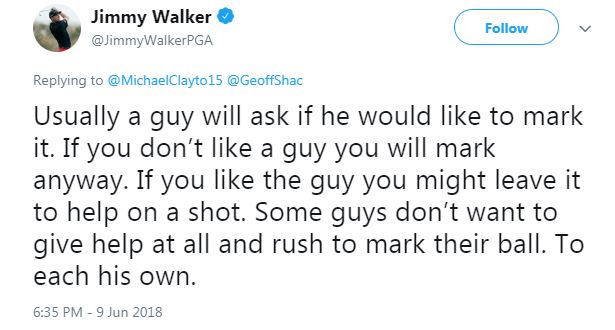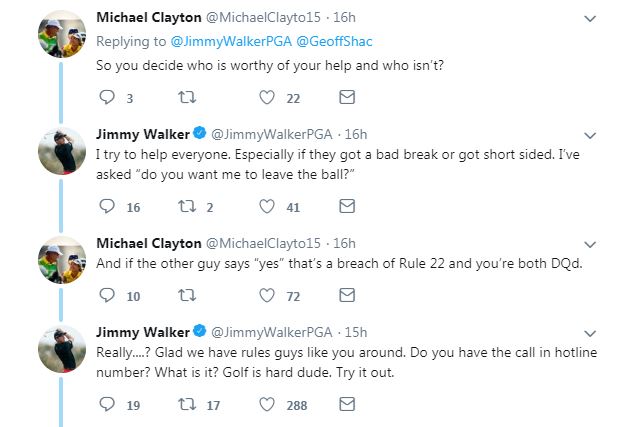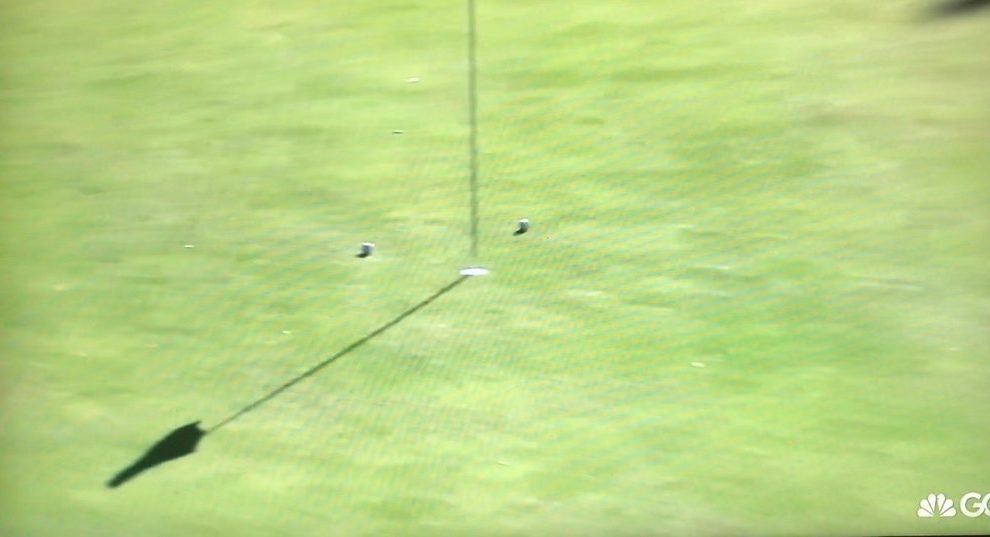You've probably seen backstopping in a PGA Tour event, but you didn't know what was happening.
Backstopping is when a pro golfer leaves their ball unmarked on the green, usually near the hole, while another player hits a shot -- typically a chip shot or bunker shot -- onto the green. The idea behind backstopping, at least in nefarious terms, is to give the approaching player a chance to ricochet their ball off the stationary ball and allow them to get their shot to finish closer to the hole.
Meanwhile, the ricochet doesn't affect the player whose unmarked ball was on the green. Under the Rules of Golf, their ball can be replaced to its original position, while the approach ball stays wherever it lands. Everyone wins.
There's been online chatter about backstopping in PGA Tour events in the last few years. On some occasions, pros who have backstopped have weighed in, saying they're not marking the ball so as to not interrupt the pace of play and allow fellow players to go when they're ready.
Then there are the players who see something different entirely happening, and they're willing to call out backstopping as a form of cheating.
So what do the Rules of Golf have to say about backstopping? Well, under Rule 22-1, players are not allowed to conspire with each other to allow each other's golf balls to assist each other. The penalty is disqualification. However, officials have to determine a clear intent to skirt the rules. There aren't many rules officials willing to make that call and have a player disqualified, particularly on the PGA Tour.
One PGA Tour player, however, has admitted to choosing to help players by not marking his ball. Jimmy Walker, the 2016 PGA Championship winner, admitted in a Twitter thread he tries to help every player he tees it up with, but he particularly chooses not to mark his ball to help players he particularly likes. It was a stunning admission of breaking the Rules of Golf.


Of course, the odds of a player's ball hitting another are pretty low, even for the best players in the world on the PGA Tour. However, the possibility is still higher for PGA Tour players precisely because they're the best. At a minimum, the perception of fans that players are working together to help each other by playing to the grey area of the Rules of Golf is a bad thing.
Golf is certainly hard, but selectively choosing to help certain players by not marking works against the spirit of the Rules of Golf and amounts to not protecting the field.

